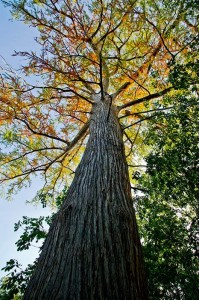
In this month’s post, I am going to be focusing on State Parks. In the past I covered Local, and National Parks, so the next logical step is investigating a State Park, and what better place than my current state of residence to do so!
But first, a quick backstory about the uniqueness of the Texas State Park System…
Texas, like other parts of the arid Southwest, resisted easy settlement. The rugged characteristics of the frontier were retained in some parts of Texas as late as the 1960s. But in most places, the taming of the frontier had a dramatic effect on the land and wildlife. In the natural course of events, the pioneers cut down the forest. They plowed the land and cleared out the brush from ditches, ravines, and woodlots. They drained the swamps and built mills on the brooks and streams.
Texans were not blind to the changes in their state. As early as the 1860s, Texas and several other western states passed the first laws to protect fish and wildlife against commercial killing. In 1907, under pressure from sportsmen, the Texas legislature followed the lead set down by other states and created a game agency to protect the state’s wildlife resources. The Texas Game, Fish, & Oyster Commission faced many obstacles in protecting Texas wildlife. Both funding and legal authority were lacking, and county after county was granted exceptions to the laws that did exist. It seemed that neither the people nor the legislature took the commission very seriously, even as fish and wildlife populations continued to decline.
At the same time, Texas stood outside the romantic impulse that was giving birth to the first national parks. As I discussed in my last post, by the late 19th century, some Americans had realized that wild places would soon be gone if they were not protected. With them would die a part of American greatness. National concern over the threats to natural wonders led Congress to set aside land at Yosemite and Yellowstone. By the 20th century, under the leadership of President Theodore Roosevelt, the national parks movement exploded, which was the focus of my previous post about National Parks.
Interestingly enough, no Texas sites were included or even considered for federal protection as national parks or monuments, and the reason was simple. Unlike other western states, Texas had retained control of its public lands when it was annexed to the United States. The federal government had no say over what Texas did with its land. Only Texans could decide that.
In 1920, Texas voters went to the polls and elected the first governor (Pat Neff) and legislature to be heavily influenced by the progressive movement. In 1923, Governor Pat Neff persuaded the legislature to create the State Parks Board. He later regarded this action as his most important achievement as governor. But Neff’s vision couldn’t have been more different than the Rooseveltian impulse that spurred the creation of the national parks. Neff was less interested in purple mountains majesty than in building campgrounds for Texans who, like himself, loved to travel by automobile. This is still reflected in many of the preserved areas around the state today. Neff and the newly appointed State Parks Board Members struggled for a decade to get funding and land for these projects, and relied heavily on donations but still couldn’t get the Parks Service off of the ground. For better or for worse, it was the hunting/fishing and game preserve system that really turned the tides for State Parks in Texas. By the 21st century, hunting leasing in Texas had become a lucrative business, generating hundreds of millions of dollars annually to Texas landowners. Considering that almost all land in Texas was privately owned, the game preserve system may have been the most important step Texas ever took to preserve wildlife and habitat. I could go on and on about the strenuous relationship and very long road it took for Texas to have a stable parks system, but I think you get the gist of the issues the state still currently faces, and I want to focus on the park I chose to explore this month.
In this post I am going to focus on McKinney Falls State Park as it’s proximity to the city of Austin makes it a great candidate for my investigation of the effects of urban sprawl and the importance of protecting these green spaces.
Nestled in the proverbial backyard of Austin Texas is McKinney Falls State Park. McKinney Falls State Park is an urban treasure. Nestled along a scenic stretch of Onion Creek in southeast Austin, its abundant wildlife, gushing waterfalls and historic ruins attract people from all walks of life. The park’s serene beauty makes it the perfect escape from the hustle and bustle of Texas’ rapidly growing state capital.
Thomas F. McKinney, for whom the park is named, was an entrepreneur who helped finance the Texas Revolution. After building his fortune in Galveston, he built a retirement homestead on Onion Creek. He planned to spend his retirement at his ranch breeding racehorses and spending time with his family. Always industrious, he built a gristmill near the Lower Falls, one of the first such mills in operation in the Austin area. The 1869 flood destroyed the mill, causing a financial ruin from which McKinney would never recover. McKinney lived on the land ranching and raising horses until his death on October 5, 1873. McKinney’s wife, Anna, sold small parcels of land to relatives, and in 1885 she sold most of the land to James W. Smith. In 1971, J.E. “Pete” Smith, the grandson of James Smith, donated 682 acres (276 ha) of the ranch to the State of Texas for a park. The land was appraised at $731,300 and the state received a matching federal grant to develop the park. After archaeological digs and surveys were completed, the park was developed. The park was dedicated on April 14, 1976 by Governor Dolph Briscoe and opened to the public on April 15. The headquarters of the Texas Parks and Wildlife Department is next to the park so it’s proximity to the city as well as the TPWD creates a special relationship.
Some of the notable flora found in McKinney SP include: Bald Cypress, Sycamore, Pecan, Live Oak, Ashe Juniper and Mesquite tress which can be found on the drier uplands of the park. Other trees found in the park include Wafer Ash, Red Oak, Texas Persimmon, Chinaberry, Cedar Elm and Mexican Plum. In the springtime the roads are lined with wildflowers, dominated by the famed Texas Bluebonnet. There are also many Cacti in the park such as the Prickly Pear and Pencil Cacus. This park also has one of my favorite flowers, the Turk’s Cap, which in bloom is absolutely beautiful. During my hike there I was able to find the famous “Old Baldy”, which is one of the oldest Bald Cypress tress on public land in Texas, estimated at more than 500 years old. McKinney Falls State Park is also home to a variety of wildlife including but not limited to: White-tailed deer, raccoons, armadillos, fox squirrels, and many bird species like the painted bunting.
This park offers so much for the surrounding community, but also has its problems which are largely due to urbanization and urban sprawl. For example, the park was a popular spot for swimming from the day it opened. However, in April 1981, swimming in the park was banned when several elementary school children complained of cramps and nausea after swimming in Onion Creek. Testing indicated the fecal coliform count in the water was 2600 per 100 milliliters of water, well above the 200 count maximum deemed safe for swimming.
The problem was blamed on rain water runoff from the mostly urban area located upstream on Onion and Williamson Creeks. The run off dumped animal waste, oils, dirt and debris into the creeks. Another contributor was the Williamson Creek Wastewater Treatment Plant. The plant would occasionally dump effluent in various stages of treatment into Williamson Creek if there was equipment failure. By 1982, the plant was overloaded by the rapid growth of the city and regularly discharged effluent into the creek, not all of which met state standards for discharge.
Twelve years later in June 1993, the park ban on swimming was finally lifted. This was due to the closure of the Williamson Creek Wastewater Treatment Plant in 1986, Austin’s enactment of a comprehensive watershed ordinance and starting a city wide hazardous chemicals collection program. Swimming is still often restricted because of high fecal coliform counts, usually after heavy rains.
Another example of the effect that the rapid growth of Austin has on this state park is that historic flooding that has happened recently. Austin’s impervious surfaces has increased exponentially with the expansion of the city, especially in the Southeast area near where the park is located. With the recent building of the F1 racetrack in that area, the consequences have been more than marginal. The Onion Creek area, where the park, as well as many communities are located, are flooding with increased frequency and severity. In the historic Halloween flood of 2013 Onion Creek rose 41 feet from its banks and flowed at 120,000 cubic feet per second. All of a sudden, this little tributary of the Colorado River was a raging river flowing with nearly twice the force of Niagara Falls. By the time Onion Creek returned to its banks, park Superintendent David Shirley was already busy coordinating damage control and cleanup. The Smith Visitor Center, which overlooks the Upper Falls, was inundated with five feet of floodwater. Debris covered hiking trails and picnic areas all along the creek. In addition to damage at the state park, the flash flood damaged or destroyed 1,200 homes along Onion Creek and took the lives of four people. Because we have been removing so much of the grassy natural areas and replacing it with concrete, the rainwater is no longer absorbing into the ground – but instead, running down to the creeks, rivers, and floodplains and filling up quicker than ever before.
A visual example of this problem:
How can we help save this park and the neighborhoods surrounding it? There are many volunteer and educational programs with the Texas Parks Service to help create lasting change and keep these areas as pristine as possible. As I have stated in every post thus far, the most important change we can make is at the personal and community involvement level. As Austinites and Texans, we need to elect officials that have sustainability in mind for the continued growth of our city, and keep corporations accountable for their impact on our communities. It is vital for us to be educated, aware, engaged, and actively stay in touch with the world around. We must be stewards to these protected areas by being conscious about how we effect what happens around it. To quote the Lorax: “Unless someone like you cares a whole awful lot, nothing is going to get better. It’s Not!”

